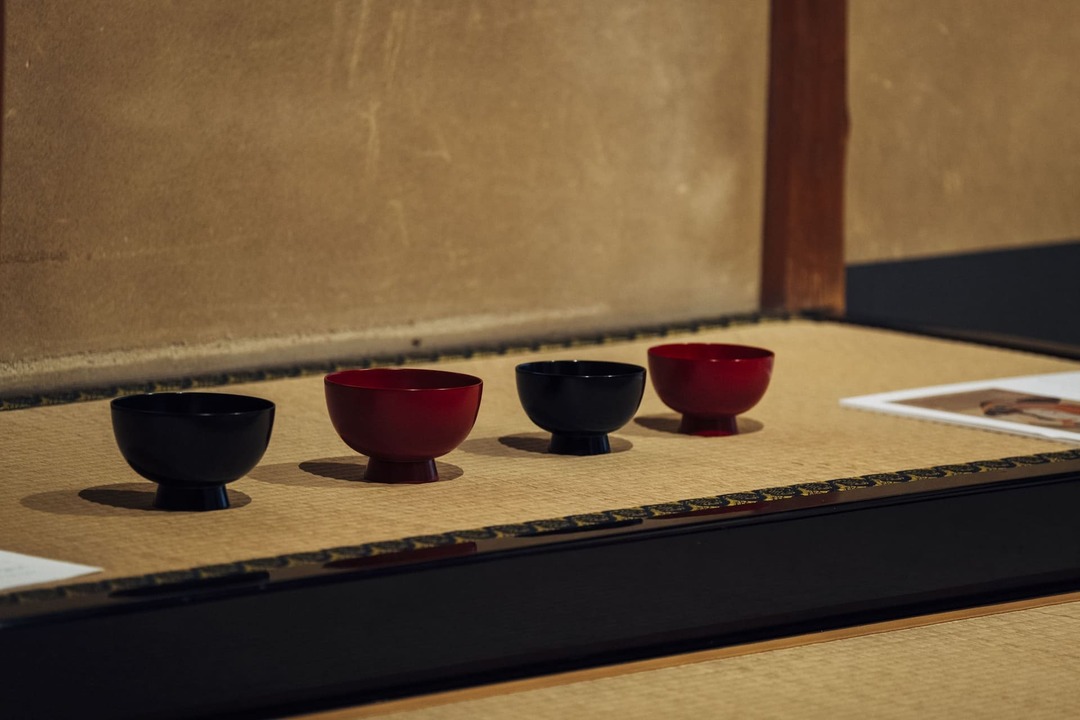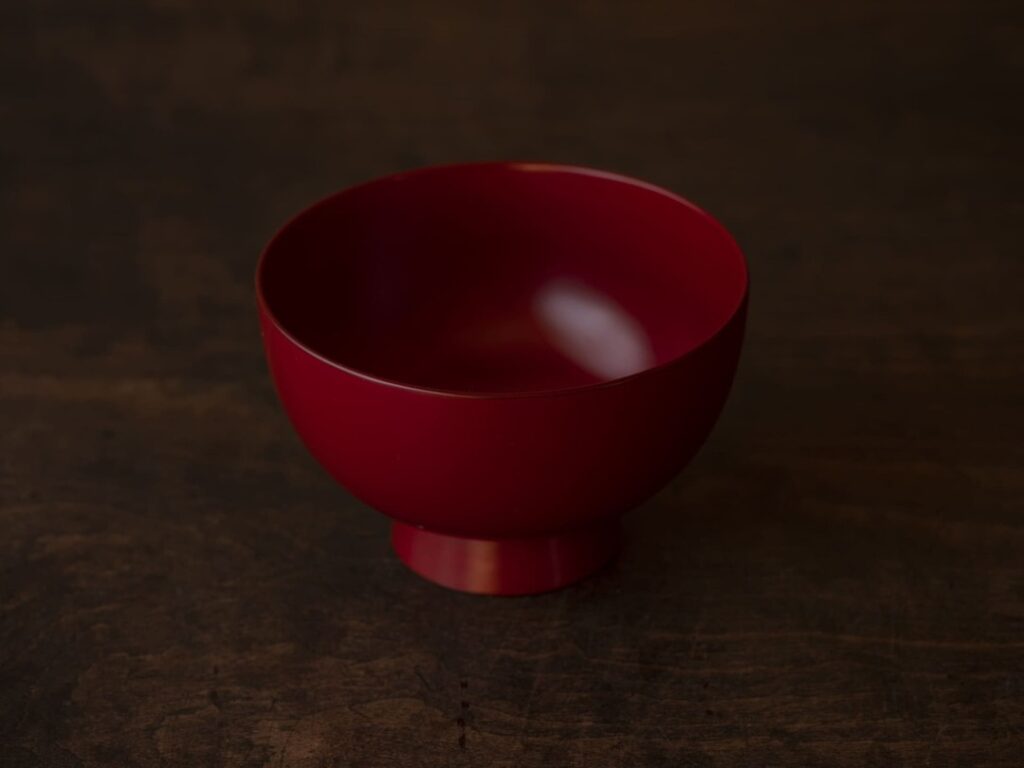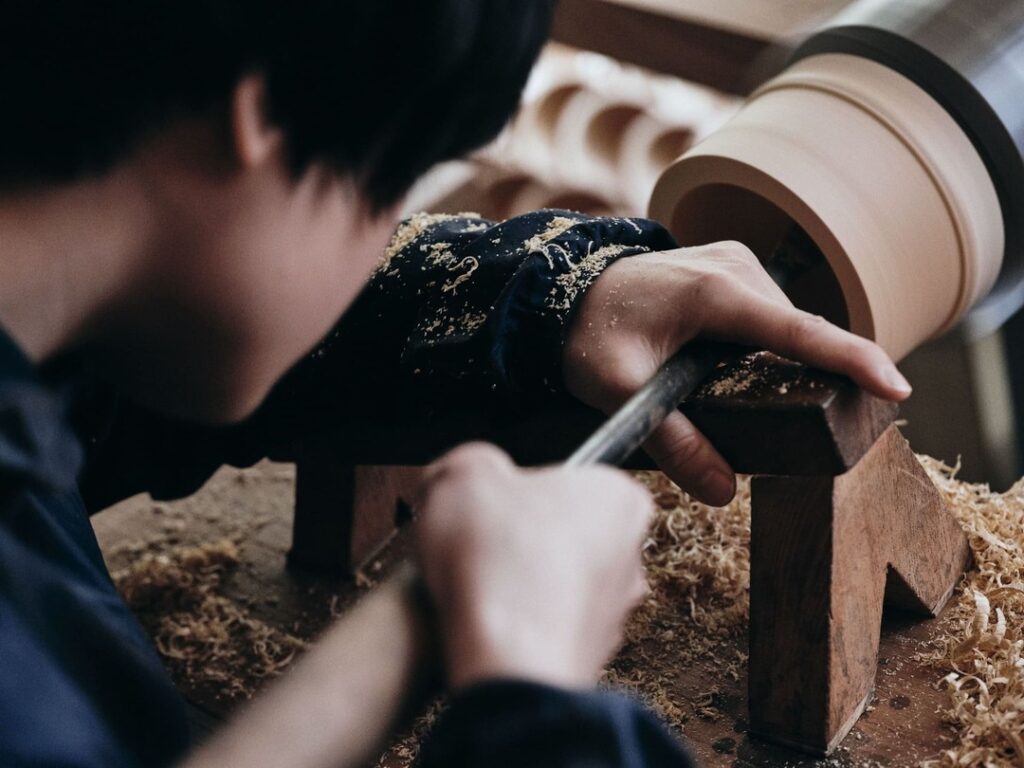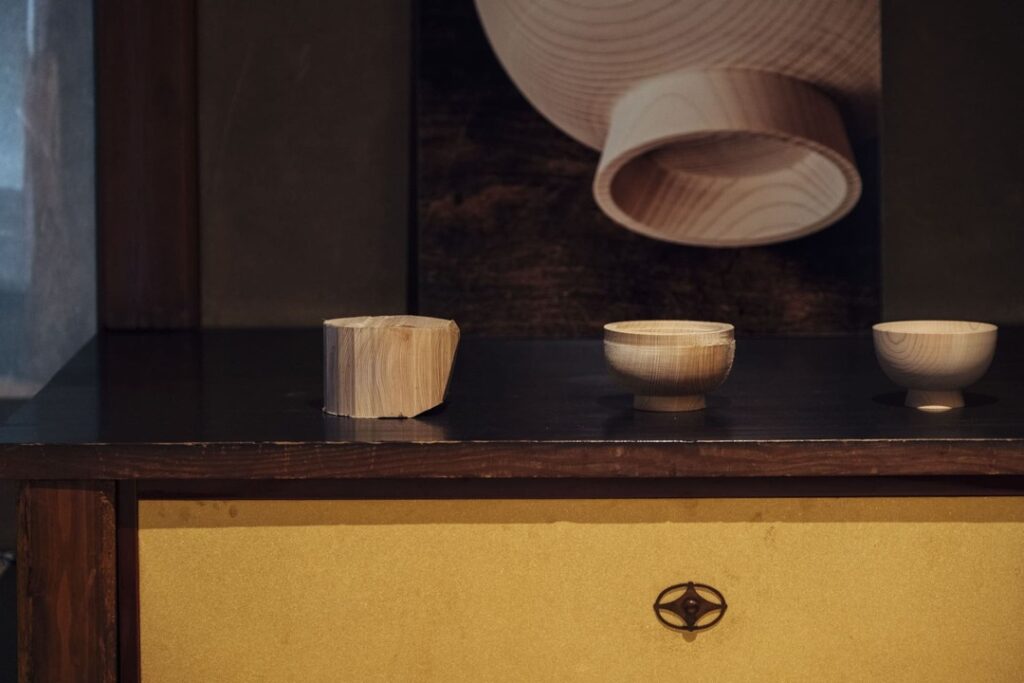
Asagi Wan (bowl)
- Ongoing
The revival of the Asagi bowl, which was loved by the common people of Kyoto during the Edo period and was once crafted by a master woodturner who is no longer with us, is a story that reflects deep connections with the past. From this master woodturner’s legacy, a beautiful Urushi bowl made from Kyoto Keihoku-sourced Hinoki (Japanese cypress) wood was born.
We hope to pass on the circle of craftsmanship that connects nature and daily life to the future. The Asagi bowl project is also an initiative to nurture the next generation of Kyoto Urushi craftsmen. The passion of the artisans, confronted with significant challenges in the field of traditional craftsmanship, has resonated with many people, sparking widespread empathy.

A Touch of Urushi for Every Bite
Until now, we have proposed ways to apply Urushi beyond the traditional boundaries of crafts with surfboards, skateboards, bicycles, and more. However, we strongly believe that Urushi should be used in items that come into direct contact with the skin, such as floors, furniture, and especially utensils that bring food to the mouth. Urushi is a natural material that can be used with peace of mind, and its presence naturally fosters beautiful actions and mindfulness.

Preserving the Work of Artisans
In Kyoto, traditional techniques unique to the region, such as those used in the creation of tea utensils, have been passed down through generations. Skilled artisans apply Urushi to wood so thin that it becomes translucent in the light, crafting lacquerware that can last for over a century. However, in today’s world, where mass-produced items abound, the demand for hand-crafted works is dwindling each year. Even young people aspiring to become artisans struggle because there is no work to be done and no opportunities to apprentice. To address this, various initiatives, including the Asagi Bowl Project, are taking place across the country.
Crafted for Comfort and Purpose in Daily Use
Even in seemingly similar bowls, upon closer inspection, one can see the artisan’s intentions expressed in the size of the foot, the graceful curves that form the rounded shape, and the thickness of the body. The shape is determined by imagining how the piece will be used, and by considering the scenes of daily life.
The Asagi Bowl, with its high foot and dignified presence, exudes a distinct Kyoto elegance. The children’s bowl is intentionally made smaller, mimicking the adult version, so that it can be held comfortably in the palm of the hand for soup or noodles. Through the careful handling of the vessel, we hope to cultivate a sense of gratitude toward the food we eat.

A gateaway to Understanding Urushi and Craftsmanship
The late Master Carver Koji Ishikawa’s vision was to create a bowl for everyday use, a way to pass on the culture of Kyoto Urushi to the next generation. This vision has been carried on by lathe carver Naoki Nishimura and lacquer craftsman Keiko Nishimura, who is dedicated to preserving Naoki’s techniques. Along with many others, including Tsutsumi Asakichi Urushi Inc., the Asagi Bowl was brought to life. It would bring us great joy if this project inspired others to appreciate Urushi and traditional crafts.
Credit
“Asagi Bowl Project” members
- Ishikawa Mitsuharu (deceased by Ishikawa Lacquer Workshop) (Initiator)
- Nishimura Naoki (Rokurokichi-shi) (initiator)
- Ishikawa Yoshi (Ishikawa Lacquer Workshop)
- Tychoye (Tyakaki Paint Store)
- Nishimura Keiko and Nishimura Yoko (Nishimura Keiko Lacquer Workshop)
- Nagai Aya (Apprentice Rokuro Woodworker)
- Ueda Ryo Kei (Apprentice Rokuro Woodworker)
- Iijima Yusuke (Apprentice painter)
- Goto Kumi (Apprentice painter)